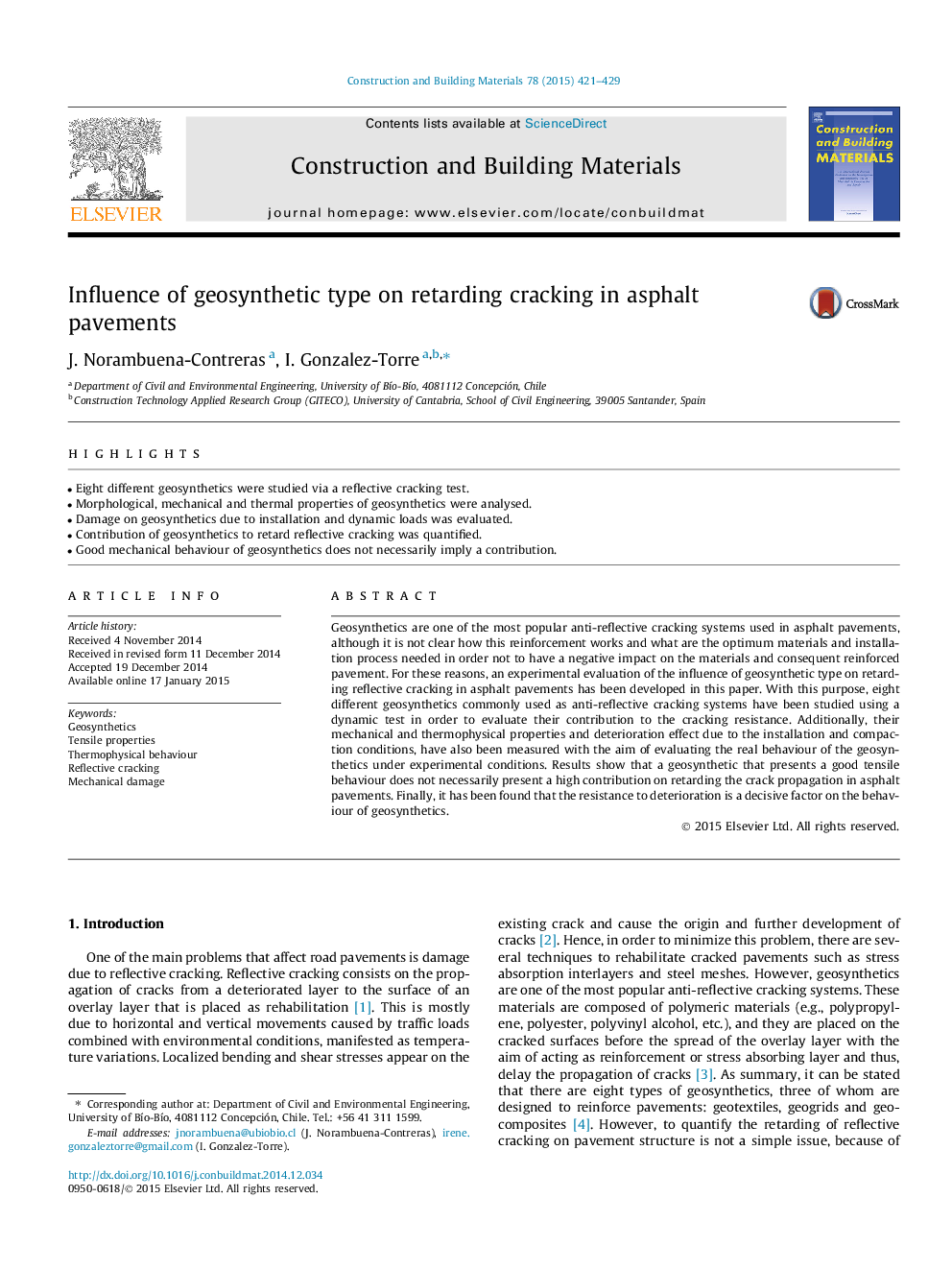| Article ID | Journal | Published Year | Pages | File Type |
|---|---|---|---|---|
| 257129 | Construction and Building Materials | 2015 | 9 Pages |
•Eight different geosynthetics were studied via a reflective cracking test.•Morphological, mechanical and thermal properties of geosynthetics were analysed.•Damage on geosynthetics due to installation and dynamic loads was evaluated.•Contribution of geosynthetics to retard reflective cracking was quantified.•Good mechanical behaviour of geosynthetics does not necessarily imply a contribution.
Geosynthetics are one of the most popular anti-reflective cracking systems used in asphalt pavements, although it is not clear how this reinforcement works and what are the optimum materials and installation process needed in order not to have a negative impact on the materials and consequent reinforced pavement. For these reasons, an experimental evaluation of the influence of geosynthetic type on retarding reflective cracking in asphalt pavements has been developed in this paper. With this purpose, eight different geosynthetics commonly used as anti-reflective cracking systems have been studied using a dynamic test in order to evaluate their contribution to the cracking resistance. Additionally, their mechanical and thermophysical properties and deterioration effect due to the installation and compaction conditions, have also been measured with the aim of evaluating the real behaviour of the geosynthetics under experimental conditions. Results show that a geosynthetic that presents a good tensile behaviour does not necessarily present a high contribution on retarding the crack propagation in asphalt pavements. Finally, it has been found that the resistance to deterioration is a decisive factor on the behaviour of geosynthetics.
